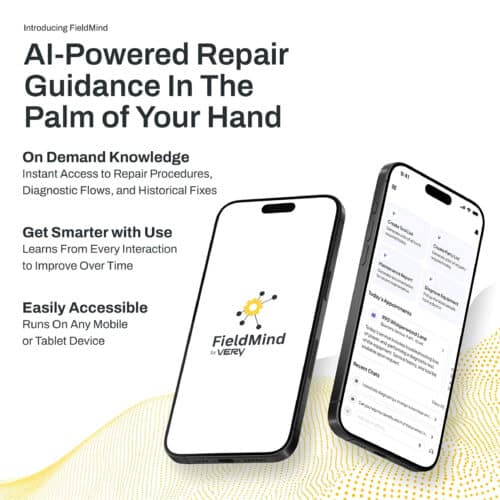BLOG
Integrating Hardware and Software Teams for IoT Development
Once a tech buzzword, the Internet of Things (IoT) has become a very real phenomenon in the past few years alone, with its own opportunities and challenges. Smart homes, wearable technology, and even self-driving cars are just a few ways that IoT products promise to transform how people live, work, and play.
As the IoT market becomes more mature, customers increasingly expect that your products will be high-quality, feature-rich, secure, and frequently updated. Businesses that want to capitalize on these trends need to evaluate their plans for IoT product development so that they can satisfy these customer demands.
Here at Very, we’ve had great success integrating our hardware and software teams when developing IoT products. In this article, we’ll discuss why hardware and software integration for IoT development is so valuable, and how you can get started doing so.
The Importance of Integrating Teams for IoT Development
A lot has been written about the “silo mentality” in business, which occurs when different divisions in the same company don’t share information or tools with each other. Silos can arise intentionally, due to bad blood between these teams or departments, or unintentionally, due to a lack of communication or physical separation.
Since they inhibit organizations from reaching their goals and potential, silos are generally seen as a negative phenomenon. Keeping the hardware and software teams separate during IoT development is highly likely to create silos and affect your efficiency and productivity as a result.
If teams aren’t integrated, it can create issues in terms of deadlines, budget, resources, and product quality. The lack of integration would be particularly challenging for distributed teams, such as the one we run here at Very. We often need to run tests on the physical hardware, so the hardware and software teams need to communicate in order for everyone to understand how the evaluation kit works.
The idea of integrating hardware and software teams for IoT development is heavily influenced by the Agile software development methodology. The traditional “waterfall” model of software development proceeds in stages from design and development to testing and release; the next stage can begin only when the previous one is complete. Agile, however, breaks a project down into units of work rather than stages, and focuses on delivering a minimally workable version of the product as soon as possible.
Putting software and hardware engineers in direct communication can (and likely should) happen as early as the schematic design. Here, collaboration can be as simple as making sure that the naming schemes for the hardware and the codebase are aligned. This saves time by preventing the need to write long, in-depth manuals or comments in code.
With IoT development, good hardware design and good software design don’t occur in isolation; both of them can impact the other. If your hardware designers are considering a certain action, they should speak to your software designers to make sure that this won’t create problems later on in the project.
3 Key Benefits of Integrated Hardware and Software Teams for IoT
Once you have the hardware and software teams working together instead of in separate silos, what are the main benefits that you can expect from this integration?
1. Expertise
Bringing together the hardware and software teams is especially valuable when you’re developing a new IoT system: the hardware hasn’t been validated, and you might not have any baseline to be working with.
In the world of embedded systems, it’s very difficult to decouple hardware and firmware on a low level. For example, if your low-level drivers aren’t working, then neither will the circuit board. Having people with both hardware and software expertise can drastically speed up the initial process of development and debugging.
2. Diversity of opinion
Without a diverse array of people and opinions contributing to the project, it’s easy to get “tunnel vision” during development. Engineers, designers, developers, testers, and managers should all be able to give their input. In particular, including perspectives from both hardware and software design will help ensure that the final product represents the best efforts of everyone at the company.
3. Product quality
By integrating IoT hardware and software development, your final product is more likely to be higher quality. Combining the two teams’ efforts not only reduces project timelines and costs, it also makes it easier to release upgrades with faster development and feedback loops.
4 Ways to Integrate Hardware and Software Teams
In this section, we’ll discuss a few best practices for how you can close the gap between your hardware and software teams for IoT development.
1. Open communication channels
Enabling clear, honest, open communication is the best way to break down business silos and get both the hardware and software teams collaborating throughout the project. This is especially important after the hardware phase of the project is complete, and the role of the hardware team switches to supporting the firmware and software development.
2. Designated project manager
When multiple teams with different goals and visions come together, there will inevitably be disagreements about the right way to do things. Make sure that you designate a project manager who can serve as a liaison between hardware and software and mediate any issues that arise.
3. Collaboration and project management tools
Collaboration tools like Slack are especially helpful for distributed workforces like we have here at Very. To improve cross-team visibility, you should also be able to track both teams’ activities and tasks in project management software such as Jira, Trello, or Pivotal Tracker.
4. Version control
Version control systems like Git are invaluable for backing up and sharing codebases. Make sure that you have a way to specify which versions of the hardware are compatible with which versions of the firmware, so that you don’t waste your time tracking down an outdated bug or working with the wrong file.
Successful Team Integration
Integrating your hardware and software teams won’t happen overnight-it requires an active, well-intentioned initiative to reorient the way that you approach IoT development. Still, the benefits of doing so are more than enough to justify the effort.
Want to learn more about how we do IoT development here at Very? Check out our complete guide to IoT development, or reach out to a member of our team.









